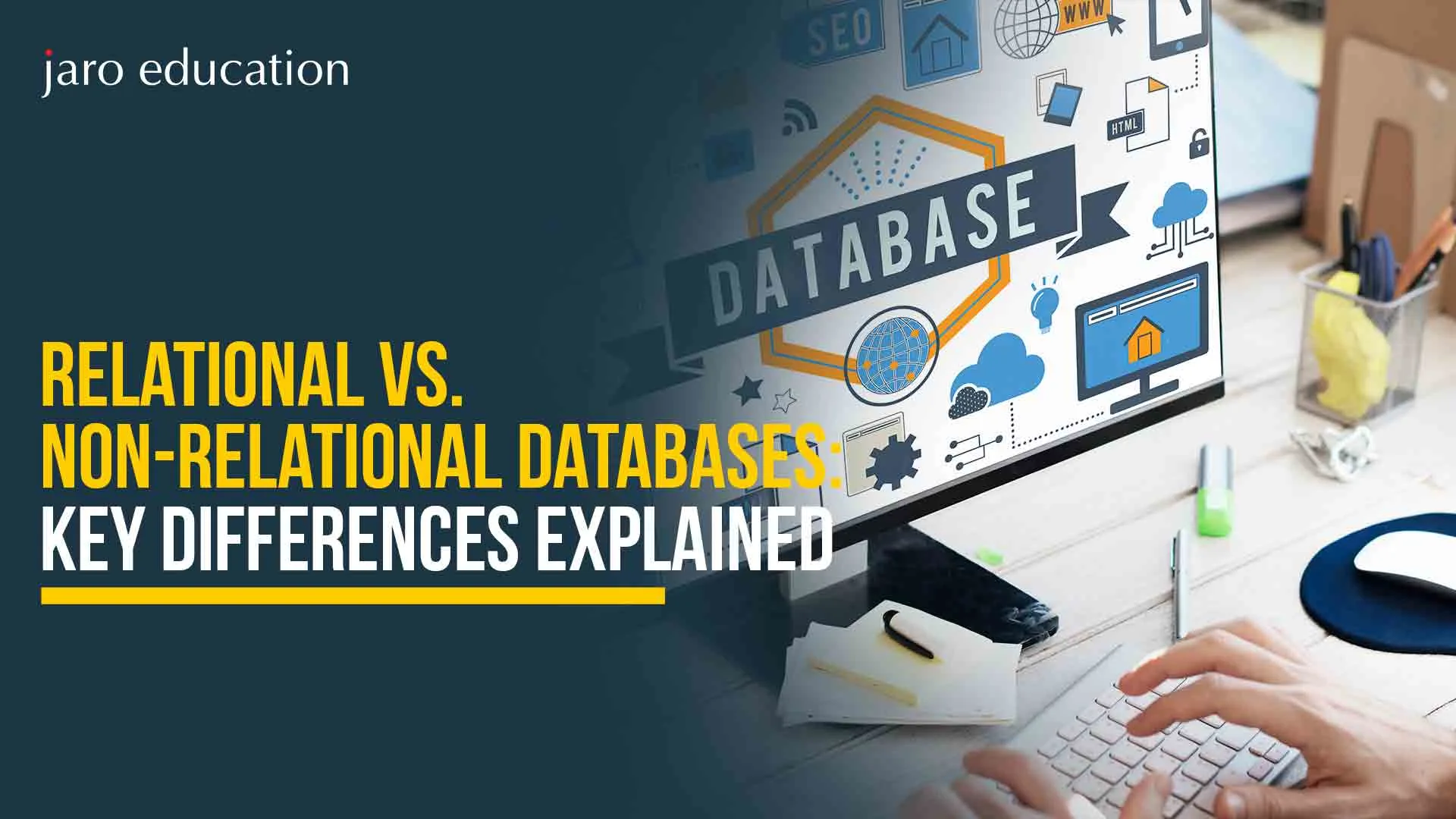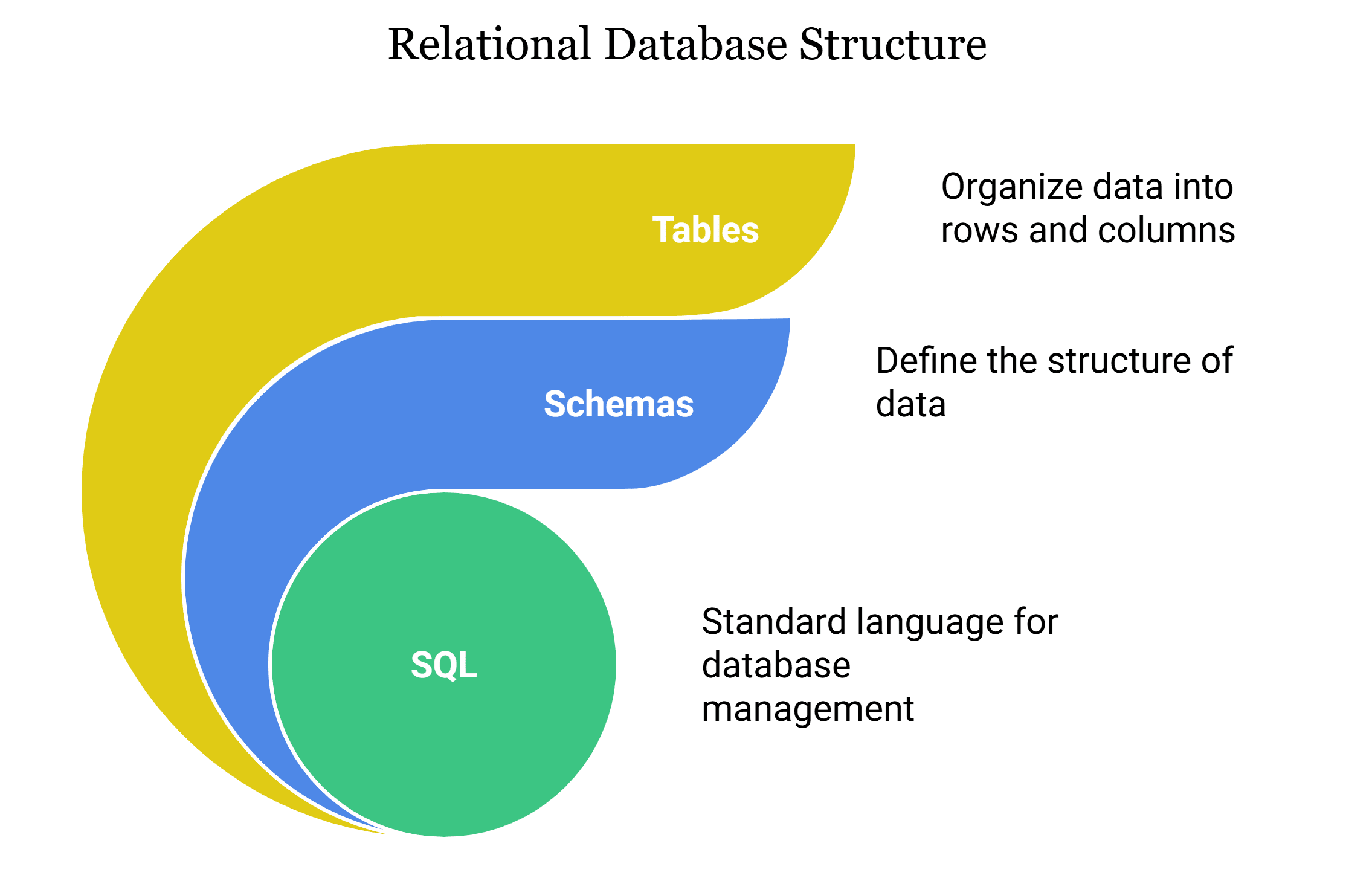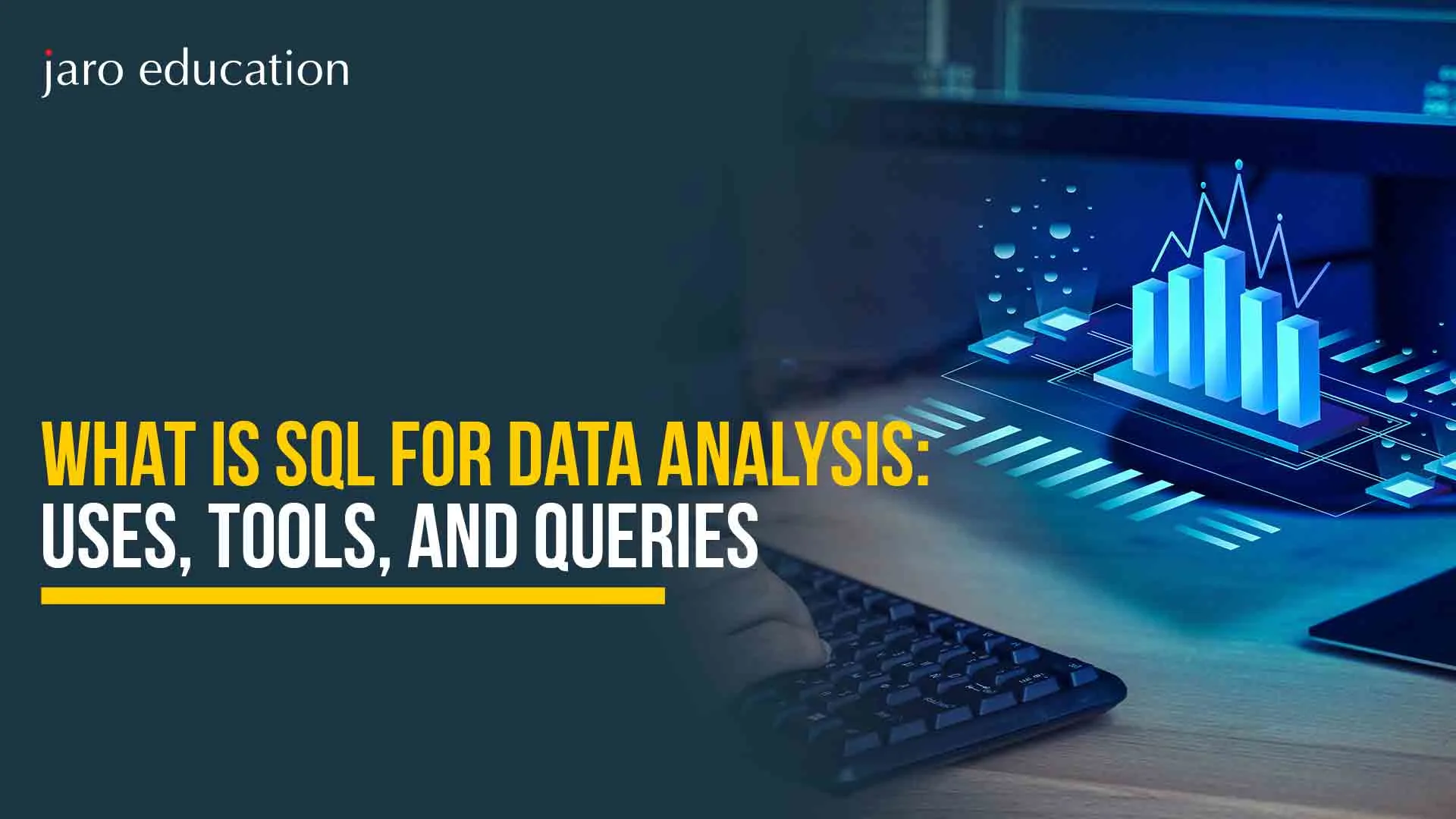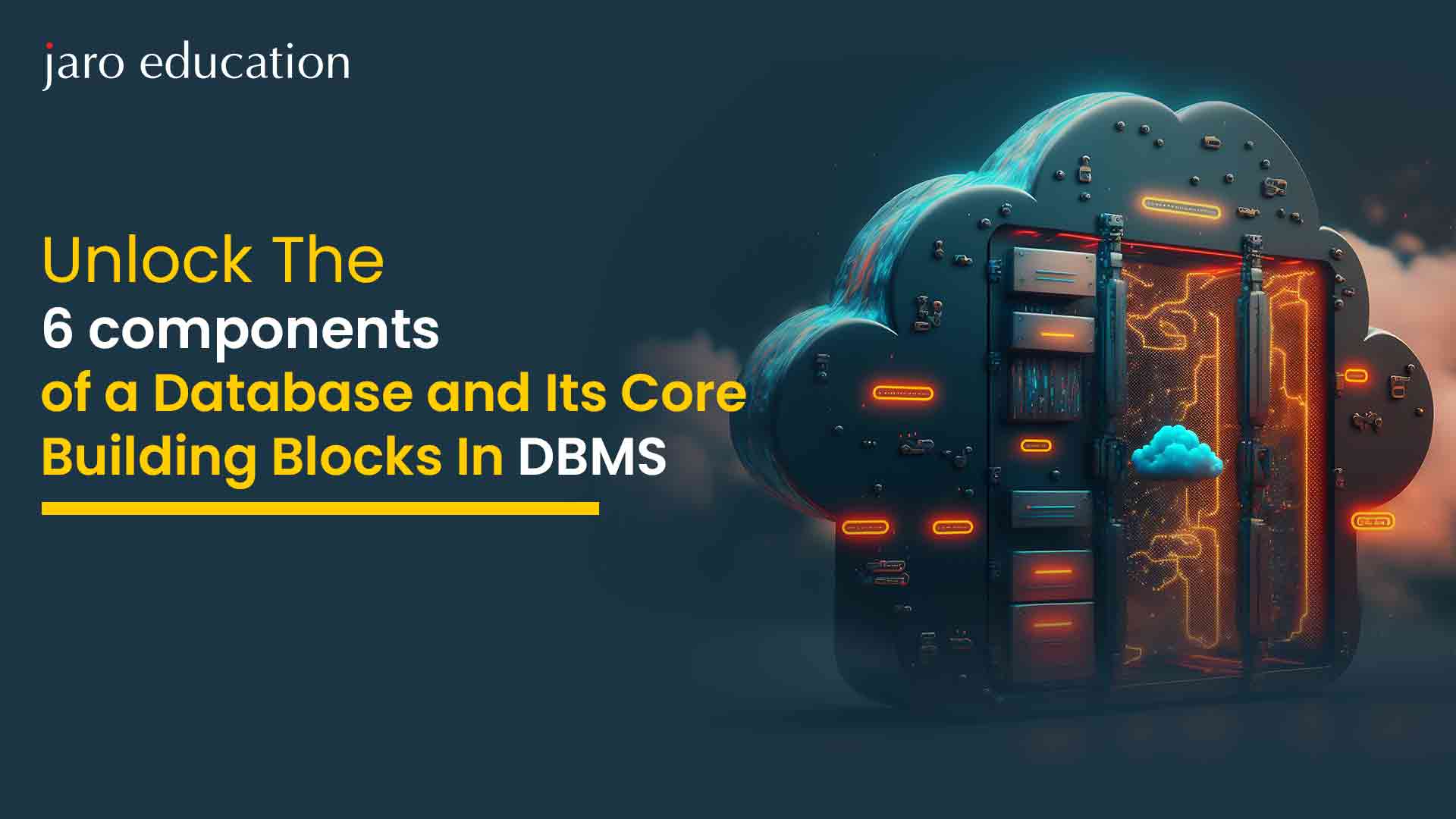Relational vs. Non-Relational Databases: Key Differences Explained
Table of Contents

Choosing the right database in the digital era is crucial for storing and managing it effectively. The key database debate today is relational vs non-relational. They differ in storage, scalability, flexibility, and how they power modern apps.
Choosing between relational (like MySQL) and non-relational (like MongoDB) databases affects performance, cost, and user experience. This blog explains relational vs non relational database differences, pros, cons, and use cases to help you choose the right one.
What is a Relational Database?
A relational database is a type of database that stores data in a structured, table-based format, where information is organized into rows and columns. Each table represents an entity (like “Customers” or “Orders”), and relationships between these tables are established using primary and foreign keys, hence the term “relational.”
This model was first proposed by E. F. Codd in 1970, and it revolutionized how data was stored, accessed, and managed. Since then, relational databases have become the foundation for countless enterprise systems, websites, and applications that require data accuracy, consistency, and complex querying.
How It Works

- Tables: Each table contains records (rows) and attributes (columns).
- Schemas: Data must follow a fixed schema, meaning every row must adhere to a predefined structure.
- SQL (Structured Query Language): SQL is the standard language used to query and manage relational databases. It allows you to retrieve, update, insert, and delete data in a highly controlled way.
Popular Relational Databases
Some widely used relational database management systems (RDBMS) include:
- MySQL – Open-source and commonly used for web applications
- PostgreSQL – Known for its advanced features and reliability
- Oracle Database – Enterprise-grade performance with strong security
- Microsoft SQL Server – Integrated well with the Microsoft ecosystem
Use Cases
Relational databases are ideal for:
- Banking systems where data integrity is critical
- ERPs and CRMs that need structured, repeatable processes
- Inventory or order management, where relationships between tables are essential
If your data is structured, consistent, and requires complex joins and strict constraints, a relational database is often the best fit.
What is a Non-Relational Database?
A non-relational database, also known as a NoSQL database, is a modern type of database designed to store unstructured, semi-structured, or rapidly changing data. Unlike relational databases that rely on fixed schemas and tables, non-relational databases are schema-less and can handle a wide variety of data formats, including documents, key-value pairs, graphs, and wide-columns.
These databases emerged to meet the demands of big data, real-time web apps, and large-scale distributed systems where traditional relational databases struggled to scale effectively.
How It Works
Instead of organizing data into rows and columns, non-relational databases use flexible formats such as:
- Document-based (e.g., JSON, BSON)
- Key-value pairs (like a dictionary)
- Column-family stores (optimized for analytical queries)
- Graph structures (nodes and relationships)
There’s no rigid structure, so new fields can be added without disrupting existing data, a huge plus for agile development.
Popular Non-Relational Databases
Here are some leading non-relational databases, each excelling in different areas:
- MongoDB – Document-based, widely used for web and mobile apps.
- Redis – Key-value store, known for in-memory speed.
- Cassandra – Column-oriented, great for massive distributed data.
- Neo4j – Graph-based, used for relationship-heavy data (like social networks).
Use Cases
Non-relational databases are preferred when:
- Data structure is constantly evolving.
- High write and read throughput is needed.
- Systems must scale horizontally across servers.
- You’re handling big data, user-generated content, or IoT streams.
For example, a social media app, a real-time recommendation engine, or a global e-commerce product catalog would thrive on a non-relational setup.
Core Differences: Relational vs Non-Relational Database
Understanding the key differences between relational and non-relational databases is essential when choosing the right solution for your application. They vary in terms of structure, scalability, performance, and how they handle data integrity.
Here’s a detailed breakdown:
1. Data Structure
Relational Database: Data is stored in tables with fixed columns and defined schemas. Each table row represents a single record, and relationships are maintained using primary and foreign keys.
Non-Relational Database: Data is stored in flexible formats like documents (JSON), key-value pairs, columns, or graphs. There’s no strict schema, making it ideal for rapidly changing or unstructured data.
2. Schema Flexibility
Relational: Has a fixed schema. Any changes to structure (like adding a new column) require migration or redefinition of the table.
Non-Relational: Schema-less or dynamic schema, allowing data models to evolve quickly, ideal for agile development and startups iterating fast.
3. Scalability
Relational: Primarily vertically scalable (add more power to one server). While clustering is possible, it’s not as straightforward for a massive horizontal scale.
Non-Relational: Designed for horizontal scalability, meaning they can handle millions of requests by distributing data across multiple servers (sharding).
4. Query Language
Relational: Uses SQL (Structured Query Language) for complex queries, joins, aggregations, and precise data retrieval.
Non-Relational: Uses various APIs or query languages (like MongoDB’s query syntax or Gremlin for graph databases) tailored to the data model.
5. ACID vs BASE Properties
Relational: Strictly follows ACID properties (Atomicity, Consistency, Isolation, Durability), making it ideal for banking, finance, and transactional systems.
Non-Relational: Typically follows BASE principles (Basically Available, Soft state, Eventual consistency), allowing better performance in distributed environments.
6. Performance and Use Cases
Relational: Performs well when data is structured and relational, and joins/transactions are frequent.
Non-Relational: Excels with large volumes of varied data, real-time analytics, and applications needing ultra-fast read/writes across regions.
Relational vs Non-Relational Database: Comparison Table
| Feature | Relational Database | Non-Relational Database |
|---|---|---|
| Data Structure | Tables | Documents, Key-Value, Graph, Column |
| Schema | Fixed | Dynamic / Schema-less |
| Query Language | SQL | API / NoSQL-specific |
| Scalability | Vertical | Horizontal |
| Transactions | ACID-compliant | BASE-compliant |
| Flexibility | Less flexible | Highly flexible |
| Best for | Structured data, transactions | Big data, real-time applications |
Choosing between these two depends on your application’s data type, volume, consistency needs, and scalability goals. In many modern systems, developers even use both together, choosing the right tool for each task.
Advantages of Relational Databases
Despite the rise of non-relational systems, relational databases remain the backbone of countless business applications across the world. Their structured nature, reliability, and maturity make them a preferred choice in many scenarios where data integrity and consistency are non-negotiable.
Let’s explore the key advantages:
1. Data Integrity and Accuracy
Relational databases enforce strong rules (via constraints, keys, and transactions) that prevent bad or duplicate data. Thanks to ACID compliance, you can trust that data remains consistent even during failures or concurrent access.
Example: In banking systems, a transaction will never be half-completed. It’s either fully executed or not at all, ensuring complete reliability.
2. Structured Query Language (SQL)
Relational databases use SQL, a powerful and standardized language that allows complex queries involving multiple joins, filters, and aggregations. This makes it easier for teams to retrieve exactly the data they need, without writing custom code for every query.
3. Defined Schema = Predictability
Having a predefined schema ensures data consistency across records. This predictability simplifies everything from validation to debugging, especially in large teams or mission-critical projects.
4. Mature Ecosystem & Tooling
With decades of development, relational databases like MySQL, PostgreSQL, and Oracle have robust ecosystems, including management tools, monitoring dashboards, and security frameworks. This makes them easier to manage at scale.
5. Best Fit for Transaction-Heavy Systems
When your application requires transactions, rollbacks, and strong consistency, like in finance, logistics, ERPs, or inventory systems, relational databases deliver unmatched reliability.
While newer technologies offer flexibility, relational databases excel in environments where structure, relationships, and consistency matter most.
Advantages of Non-Relational Databases
In today’s fast-paced digital world, where applications deal with massive volumes of unstructured and rapidly evolving data, non-relational databases have become the go-to solution. They offer the flexibility, speed, and scalability that modern businesses need to stay competitive.
Let’s dive into the major benefits of using non-relational databases:
1. Schema Flexibility
Non-relational databases are schema-less, which means you can add new fields to documents without affecting existing data. This is a huge advantage in agile environments where product features and data models evolve quickly.
Example: In an e-commerce app, you can add a “flash sale price” to only selected products without modifying the schema for all products.
2. Designed for Unstructured & Semi-Structured Data
Not all data fits neatly into rows and columns. Non-relational databases can store JSON, XML, multimedia files, geospatial data, logs, and more, all in their native formats. This makes them ideal for social platforms, IoT, and analytics engines.
3. High Scalability
Non-relational databases scale horizontally by adding more servers, making them perfect for handling high traffic and massive datasets. They’re often used in cloud-native applications where distributed architecture is a must.
Example: MongoDB or Cassandra can serve millions of users by sharing data across servers worldwide.
4. Performance at Scale
With optimized data models (like key-value or wide-column stores), non-relational databases deliver low-latency performance, especially for read/write-heavy workloads. They reduce the overhead of joins and normalization found in relational systems.
5. Real-Time Data Handling
Need to serve personalized recommendations, chat messages, or live analytics? Non-relational databases like Redis and Firebase are built for real-time data access and updates, powering modern app experiences seamlessly.
In summary, non-relational databases offer unmatched agility, scalability, and performance, especially when dealing with complex, fast-changing, or massive data across distributed systems.
When to Use Which: Choosing the Right Database
There’s no one-size-fits-all solution when it comes to databases. The choice between a relational vs non-relational database depends on your application’s goals, data structure, performance needs, and scalability expectations. Here’s how to make the right call.
Use a Relational Database When:
Your data is structured and consistent
If you’re dealing with clear, repeatable records like customer information, inventory, or transactions, relational databases shine.
You need strong data integrity
Applications like banking, accounting, or enterprise software demand accuracy and ACID compliance to prevent data loss or corruption.
You need complex queries and joins
When you frequently need to fetch and combine data across multiple tables, SQL’s powerful querying abilities come in handy.
Example Scenarios:
- Payroll and HR systems
- Inventory and billing systems
- Healthcare records management
- ERP/CRM solutions
Use a Non-Relational Database When:
You’re working with semi-structured or unstructured data
JSON, images, videos, log files, or product catalogs with variable attributes? A schema-less model is ideal.
You expect rapid or unpredictable growth
If your app needs to scale quickly (e.g., during flash sales, viral traffic spikes, or global expansion), horizontal scaling in NoSQL systems will help.
You want high-speed, real-time performance
Applications like messaging, recommendation engines, or live dashboards benefit from fast reads/writes that non-relational databases are built for.
Example Scenarios:
- Social media platforms
- IoT applications
- Content management systems (CMS)
- Mobile or gaming apps
Hybrid Approach: Best of Both Worlds
Many modern architectures combine both types. For example:
Use a relational DB for user data and transactions
Use a non-relational DB for activity logs, chat messages, or recommendation history
With microservices, it’s easier than ever to tailor each service to the most appropriate database.
Future Trends: What’s Next for Databases?
As technology continues to evolve, so do the demands placed on databases. Businesses are no longer tied to one-size-fits-all systems, they’re looking for flexibility, scalability, and speed. So, what does the future hold in the ongoing evolution of relational vs non-relational database systems?
1. Rise of NewSQL Databases
NewSQL combines the best of both worlds, relational structure with NoSQL-like scalability. It supports ACID transactions like traditional RDBMS while enabling horizontal scaling. Popular examples include CockroachDB, Google Spanner, and VoltDB.
Why it matters: Enterprises can now scale relational databases without sacrificing consistency.
2. Multi-Model Databases
Instead of choosing between relational or non-relational, developers are adopting multi-model databases that support different data types and access patterns, within a single platform.
Examples: ArangoDB, OrientDB, Azure Cosmos DB
These allow you to mix and match documents, graphs, and key-value pairs depending on the use case.
3. Cloud-Native & Serverless Databases
Cloud platforms are redefining database architecture. Solutions like Amazon Aurora, Firebase, and Azure Cosmos DB offer fully managed, scalable, and serverless options, reducing DevOps effort while increasing performance.
Expect to see more businesses go “cloud-first” with auto-scaling, pay-per-use models, and global distribution.
4. AI and Automation in Database Management
Modern databases are starting to use AI for query optimization, auto-indexing, anomaly detection, and predictive scaling. This will simplify administration and reduce the need for deep database tuning.
Example: Google BigQuery uses ML to automatically optimize queries for faster performance.
5. Focus on Data Privacy and Security
As data regulations grow tighter (GDPR, DPDP Bill in India), databases are integrating built-in security, encryption, and compliance tools. Whether you choose a relational or non-relational system, future-ready databases will emphasize privacy-first architecture.
While relational databases will continue to dominate legacy systems and enterprise applications, non-relational and hybrid models are clearly the future for agile, data-heavy, and real-time applications.
Choosing a future-proof database today means thinking beyond current needs, anticipating scalability, compliance, and data diversity tomorrow.
Conclusion
In a data-driven world, choosing between relational and non-relational databases isn’t about which is better, it’s about what fits your needs. Relational systems offer structure and reliability, while non-relational ones shine in speed and scalability.
The future lies in flexibility, think NewSQL, multi-model, and cloud-native solutions. Sometimes, the best approach is using both to build a scalable, future-ready architecture.
Frequently Asked Questions
What is the main difference between relational and non-relational databases?
Relational databases store data in structured tables with predefined schemas, while non-relational databases handle unstructured or semi-structured data using flexible formats like documents, key-value pairs, or graphs.
When should I use a non-relational database instead of a relational one?
Non-relational databases are ideal for handling large volumes of unstructured data, real-time analytics, big data applications, or when flexibility and scalability are required, such as in IoT, social media, or content management systems.
Are non-relational databases more scalable than relational databases?
Yes, non-relational databases are generally designed for horizontal scalability, making them better suited for distributed systems and cloud-based applications, whereas relational databases typically scale vertically and are best for structured data with complex queries.
Recent Blogs
It seems we can't find what you're looking for.















